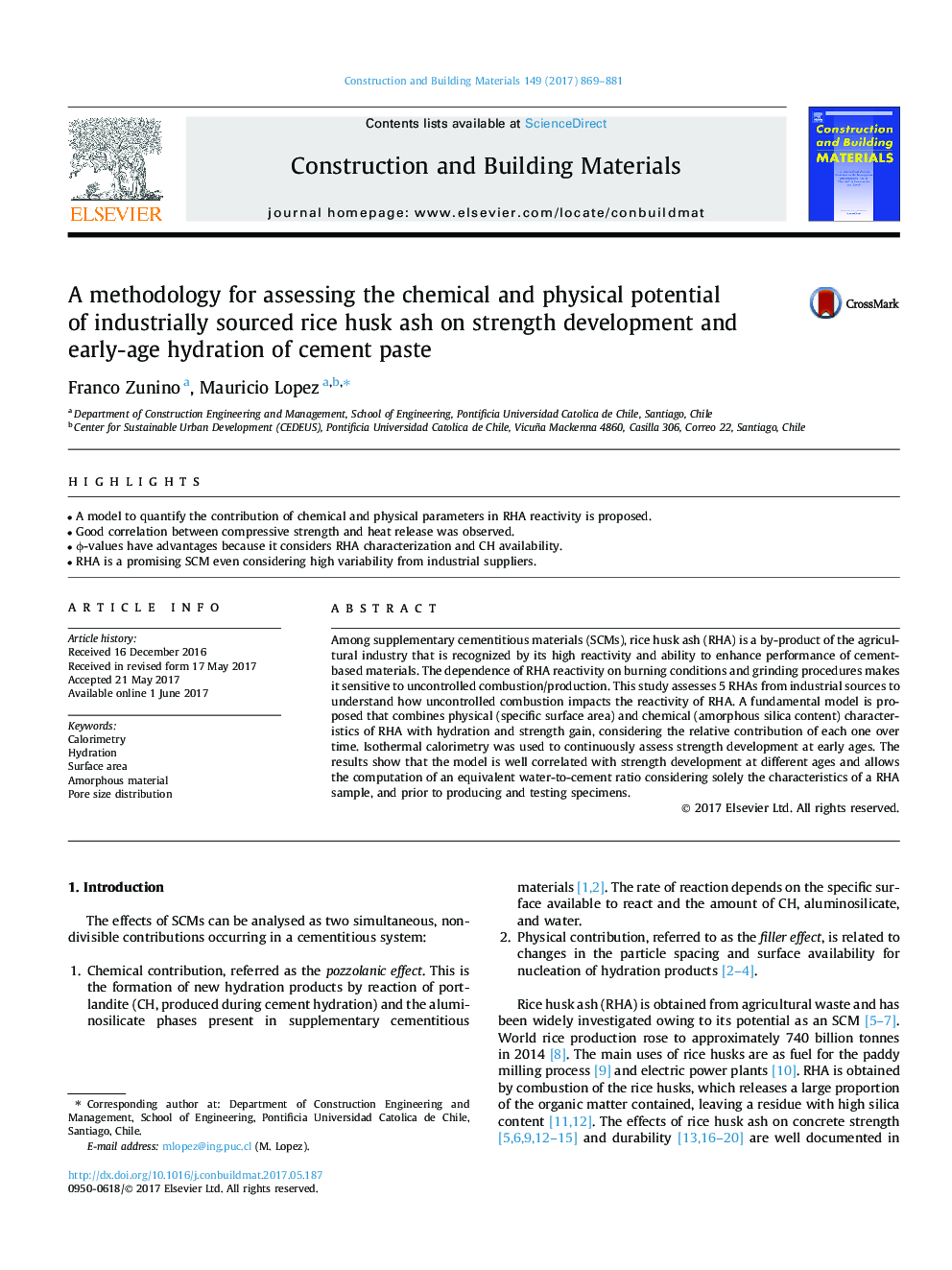| Article ID | Journal | Published Year | Pages | File Type |
|---|---|---|---|---|
| 4913127 | Construction and Building Materials | 2017 | 13 Pages |
Abstract
Among supplementary cementitious materials (SCMs), rice husk ash (RHA) is a by-product of the agricultural industry that is recognized by its high reactivity and ability to enhance performance of cement-based materials. The dependence of RHA reactivity on burning conditions and grinding procedures makes it sensitive to uncontrolled combustion/production. This study assesses 5 RHAs from industrial sources to understand how uncontrolled combustion impacts the reactivity of RHA. A fundamental model is proposed that combines physical (specific surface area) and chemical (amorphous silica content) characteristics of RHA with hydration and strength gain, considering the relative contribution of each one over time. Isothermal calorimetry was used to continuously assess strength development at early ages. The results show that the model is well correlated with strength development at different ages and allows the computation of an equivalent water-to-cement ratio considering solely the characteristics of a RHA sample, and prior to producing and testing specimens.
Related Topics
Physical Sciences and Engineering
Engineering
Civil and Structural Engineering
Authors
Franco Zunino, Mauricio Lopez,
